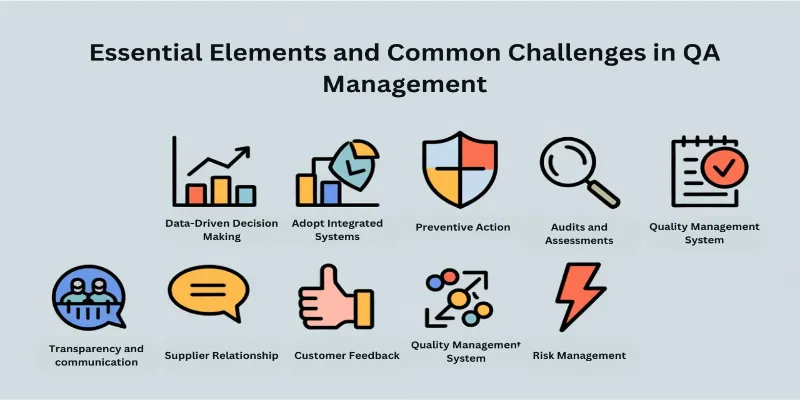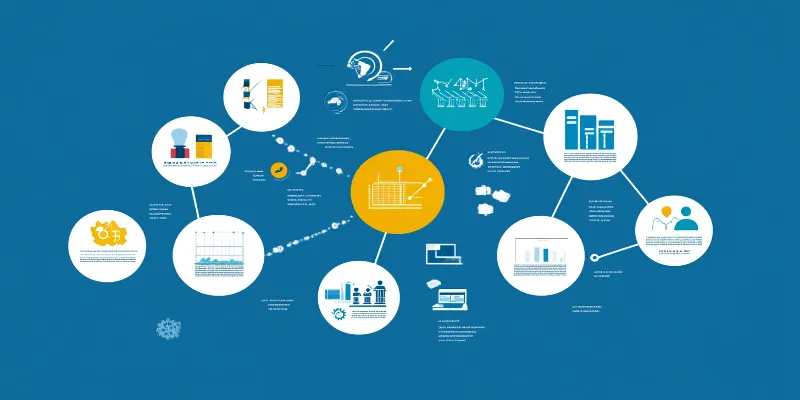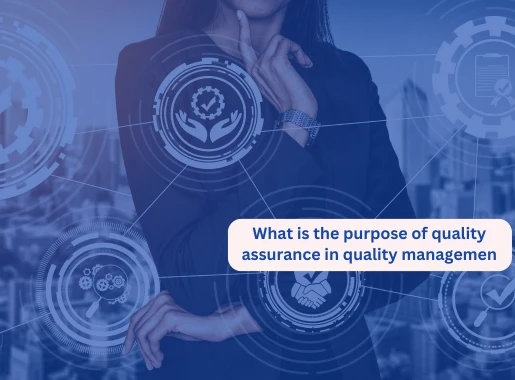Essential Elements and Common Challenges in QA Management
Quality Assurance (QA) management involves overseeing the processes by which products and services are developed and delivered to ensure they meet predefined quality standards. A robust QA management strategy not only secures compliance and mitigates risks but also fosters customer loyalty by consistently delivering high-quality outcomes.
QA management traces its roots back to the manufacturing sector during the Industrial Revolution, where the need to ensure the quality and reliability of mass-produced goods became essential. Over time, these practices have been refined and adopted by various industries, including software development, healthcare, and food services.
This blog delves into the principles of effective QA management, offering practical insights and strategies to help businesses enhance their QA practices.
Essential Elements of QA Management
Here are the essential elements that form the backbone of effective QA management:
- Strategic Planning: Setting clear, measurable goals that align QA initiatives with business objectives.
- Process Standardization: Developing standardized procedures for all phases of product and service delivery to ensure consistency and efficiency.
- Employee Involvement: Engaging all employees in quality goals and initiatives to foster a culture of quality throughout the organization.
Effective Strategies for QA Management
Some effective strategies for QA management that can help ensure quality and improve overall business performance are:

1. Adopt Integrated Systems
Utilize comprehensive QA software systems that integrate with other business operations, providing seamless data flow and enhanced insight into quality control metrics.
2. Data-Driven Decision Making
Empower your QA management with data-driven insights, using analytics to pinpoint areas of improvement and measure the impact of implemented changes.
3. Preventive Action:
Focus on preventive measures rather than corrective actions to minimize the occurrence of defects or issues before they arise.
4. Implement a Quality Management System (QMS)
Develop and implement a Quality Management System based on international standards such as ISO 9001. A QMS provides a formalized system of procedures and processes to ensure product and service quality. This system should include clear documentation, process descriptions, and quality objectives.
5. Conduct Regular Audits and Assessments
Regularly scheduled internal and external audits are crucial for maintaining high-quality standards. Audits help in identifying non-compliance and deviations from the established QMS, enabling timely corrective actions.
6. Focus on Customer Feedback
Integrate customer feedback into the QA process to ensure that the product or service meets market needs and expectations. Regularly collecting and analyzing customer feedback can provide valuable insights into quality improvement and customer satisfaction.
7. Develop Strong Supplier Relationships
Quality assurance extends to every part of the supply chain. Develop strong relationships with suppliers and ensure they adhere to the same quality standards as your organization. Conduct supplier audits and involve them in quality improvement initiatives.
8. Implement Risk Management
Incorporate risk management into QA processes to proactively identify, assess, and mitigate risks that could impact quality. This involves detailed risk analysis and contingency planning to handle potential issues effectively.
9. Promote Transparency and Communication
Ensure transparency in all QA processes and maintain open lines of communication across departments. This helps in ensuring everyone is aware of quality issues, updates, and changes in processes, fostering a more collaborative approach to quality management.
Overcoming Common Challenges in QA Management
Overcoming challenges in Quality Assurance (QA) management is essential for maintaining high standards of product and service quality. Here are some common challenges faced in QA management along with strategies for effectively addressing them:

1. Integrating QA with Agile Processes
Challenge: Traditional QA methods often struggle to keep pace with the rapid iterations of Agile development processes.
Solution: Integrate QA into the Agile lifecycle from the beginning. Encourage QA teams to participate in planning sessions, sprints, and scrums to ensure continuous testing and feedback. Employ automated testing tools to keep up with frequent releases.
2. Resource Constraints
Challenge: QA teams often face limited resources, including budget, time, and skilled personnel.
Solution: Prioritize tasks based on risk and impact to focus resources on critical areas. Consider outsourcing certain QA functions or adopting automation to enhance efficiency and reduce the burden on human resources.
3. Maintaining Product Quality with Scaling
Challenge: As organizations grow, maintaining consistent product quality can become increasingly difficult.
Solution: Standardize QA processes across all teams and locations. Use scalable QA frameworks and tools that can grow with the company. Regular training and updates in QA practices help maintain standards as the organization expands.
4. Evolving Technology and Tools
Challenge: Keeping up with rapidly changing technology and new QA tools can be daunting.
Solution: Invest in ongoing education and training for QA teams. Subscribe to industry publications, attend workshops, and participate in relevant conferences. Evaluate and integrate new tools that can improve QA effectiveness and efficiency.
5. Aligning QA Objectives with Business Goals
Challenge: QA objectives are sometimes seen as misaligned with the broader business goals, leading to conflicts and inefficiencies.
Solution: Ensure that QA goals are integral to business objectives from the outset. Regular communication between QA managers and business leaders can align efforts towards common goals and demonstrate the value of QA in achieving business success.
6. Ensuring Effective Communication Across Teams
Challenge: Miscommunication between QA, development, and other departments can lead to errors and delays.
Solution: Foster an organizational culture that promotes open communication. Use collaborative tools and regular meetings to keep all teams aligned. Clearly define and document QA processes and expectations to avoid misunderstandings.
7. Dealing with Changing Regulations
Challenge: Regulatory requirements can change frequently, particularly in industries like healthcare and finance, posing compliance risks.
Solution: Stay updated on regulatory changes by subscribing to regulatory updates. Implement flexible QA systems that can quickly adapt to new requirements. Regular compliance audits can help catch potential issues early.
8. Managing Outsourced QA Functions
Challenge: Outsourcing QA can lead to issues with quality control and integration with in-house processes.
Solution: Carefully select outsourcing partners with proven track records. Establish clear communication channels and regularly scheduled check-ins. Use detailed contracts and SLAs to set expectations and responsibilities.
9. Handling Data Security and Privacy
Challenge: QA often involves handling sensitive data, making it a target for security breaches.
Solution: Implement stringent data security measures, including encryption and access controls. Ensure that all QA processes comply with relevant data protection regulations like GDPR or HIPAA.
10. Adapting to Customer Feedback
Challenge: Rapidly integrating customer feedback into QA processes can be challenging, especially when feedback indicates a need for significant changes.
Solution: Develop a streamlined process for collecting, analyzing, and prioritizing customer feedback. Engage cross-functional teams to quickly implement necessary changes and maintain customer satisfaction.
By addressing these challenges head-on, organizations can enhance their QA management capabilities, leading to improved product quality, customer satisfaction, and operational efficiency.
Connect with AMREP Mexico
For further insights or to discover how tailored QA solutions can benefit your business, reach out to us at AMREP Mexico, where every step towards quality is a step towards success. Join us on our mission to uphold the highest standards in every endeavor.


